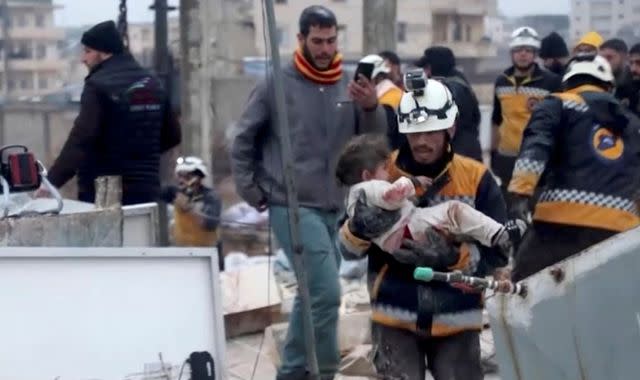Turkey earthquake: Strong, shallow and beneath a highly-populated area - this is the worst kind of quake

With a magnitude of 7.8, the initial earthquake to hit southeastern Turkey was one of the most powerful the country has ever experienced.
There are fewer than 20 earthquakes greater than magnitude 7 anywhere on the planet each year.
But what makes this disaster so unusual, and in all likelihood far more damaging, is an aftershock of magnitude 7.5 that struck nine hours later about 100km (62 miles) north of the initial epicentre.
Turkey hit by second earthquake - follow live updates
This second massive earthquake may have led to fewer casualties than the first: it happened during daytime, and people would potentially have evacuated buildings because of the initial quake. But it will only have deepened the ongoing crisis and efforts to rescue survivors.
As well as being powerful, both the first quake and the major aftershock were relatively shallow in the Earth's crust - 17km and 10km deep respectively - and struck in populated areas.
The closer an earthquake is to the surface, the more of its energy finds its way to buildings and infrastructure above.
More modern, well-constructed buildings had a good chance of surviving the shaking from these earthquakes. Building codes in Turkey were toughened following a 7.6 magnitude quake which hit the northwestern town of Izmit in 1999 and killed more than 17,000 people.
However older structures, or those built with substandard materials or design were vulnerable. Smaller towns and villages with fewer modern buildings spread across this now, very large disaster zone may have suffered far greater damage.
The cause of the shaking was a sudden release of stress that's been building up along the East Anatolian fault line for more than a century - the last earthquake of similar magnitude to hit the region was in 1872.
Read more on this story
Why is the earthquake death toll so high in Turkey and Syria?
Terrifying video shows block of flats collapse in less than ten seconds
Much of Turkey sits on the Anatolian tectonic plate which is being pushed westwards at about 2cm a year. That stress has been accumulating and has now been released with disastrous consequences in the initial major quake.
The subsequent major aftershock was probably cause by the initial quake destabilising an adjacent fault that had also accumulated geological stresses overtime.
The fact Turkey, and this region specifically, is prone to earthquakes, means there's a good level of preparedness in terms of rescue teams and equipment. But the size of the affected area, and damage to roads and other infrastructure could present a major challenge to even the best equipped and prepared first responders.
Stephen Hicks, a seismologist at University College London, told Sky News on Monday that what Turkey and Syria have experienced is "the worst kind of earthquake".
"It's a very shallow earthquake beneath a highly populated area, a very strong earthquake, and in a region where we can see the buildings just can't withstand this level of shaking."
Mr Hicks explained that with an earthquake as large as the initial one which struck Turkey, the epicentre is "not just a single point".
"This earthquake actually ruptured along a fault for about 400km. So imagine tearing a piece of paper and it tearing for 400km. That rupture has occurred over about 100 seconds," he added.

 Yahoo News
Yahoo News 
